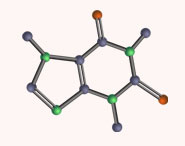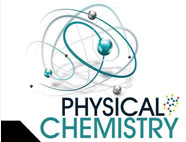


 علم الكيمياء
علم الكيمياء 
 الكيمياء التحليلية
الكيمياء التحليلية 
 الكيمياء الحياتية
الكيمياء الحياتية 
 الكيمياء العضوية
الكيمياء العضوية 
 الكيمياء الفيزيائية
الكيمياء الفيزيائية
 الكيمياء اللاعضوية
الكيمياء اللاعضوية 
 مواضيع اخرى في الكيمياء
مواضيع اخرى في الكيمياء
 الكيمياء الصناعية
الكيمياء الصناعية | Organic chemistry and the periodic table الكيمياء العضوية والجدول الدوري |
|
|
|
أقرأ أيضاً
التاريخ: 12-12-2020
التاريخ: 2025-01-18
التاريخ: 1-10-2019
التاريخ: 10-5-2019
|
All the compounds we have shown you are built up on hydrocarbon (carbon and hydrogen) skeletons. Most have oxygen and/or nitrogen as well; some have sulfur and some phospho rus, and maybe the halogens (F, Cl, Br, and I). These are the main elements of organic chemistry.
But organic chemistry has also benefitted from the exploration of (some would say takeover bid for) the rest of the periodic table. The organic chemistry of silicon, boron, lithium, tin, copper, zinc, and palladium has been particularly well studied and these elements are common constituents of ‘organic’ reagents used in the laboratory. You will meet many of them throughout this book. Butyllithium, trimethylsilyl chloride, tributyltin hydride, diethylzinc, and lithium dimethyl uprate provide examples.
The halogens also appear in many life-saving drugs. Antiviral compounds such as failure dine (which contains both F and I, as well as N and O) are essential for the fight against HIV and AIDS. They are modelled on natural compounds from nucleic acids. The naturally occur ring cytotoxic (antitumour) agent halomon, extracted from red algae, contains Br and Cl. The organic chemist’s periodic table would have to emphasize all of these elements and more—the table below highlights most of those elements in common use in organic reactions. New connections are being added all the time—before the end of the last century the organic chemistry of ruthenium, gold, and samarium was negligible; now reagents and catalysts incorporating these metals drive a wide range of important reactions
So where does inorganic chemistry end and organic chemistry begin? Would you say that the antiviral compound foscarnet was organic? It is a compound of carbon with the formula CPO5Na3 but it has no C–H bonds. And what about the important reagent tetrakis (tri phenylphosphine) palladium? It has lots of hydrocarbon—12 benzene rings in fact—but the benzene rings are all joined to phosphorus atoms that are arranged in a square around the central palladium atom, so the molecule is held together by C–P and P–Pd bonds, not by a hydrocarbon skeleton. Although it has the very organic-looking formula C72H60P4Pd, many people would say it is inorganic. But is it?
The answer is that we don’t know and we don’t care. Strict boundaries between traditional disciplines are undesirable and meaningless. Chemistry continues across the old boundaries between organic chemistry and inorganic chemistry, organic chemistry and physical chemistry or materials, or organic chemistry and biochemistry. Be glad that the boundaries are indis tinct as that means the chemistry is all the richer. This lovely molecule (Ph3P)4Pd belongs to chemistry.



|
|
|
|
التوتر والسرطان.. علماء يحذرون من "صلة خطيرة"
|
|
|
|
|
|
|
مرآة السيارة: مدى دقة عكسها للصورة الصحيحة
|
|
|
|
|
|
|
نحو شراكة وطنية متكاملة.. الأمين العام للعتبة الحسينية يبحث مع وكيل وزارة الخارجية آفاق التعاون المؤسسي
|
|
|